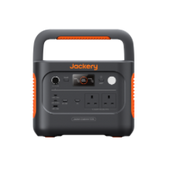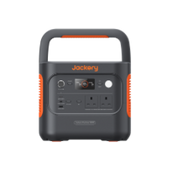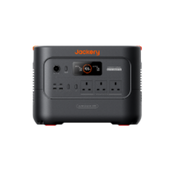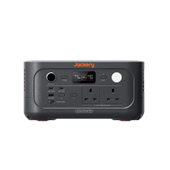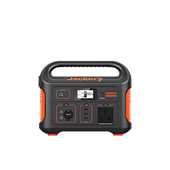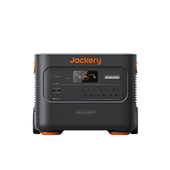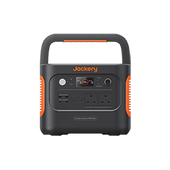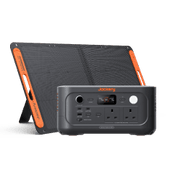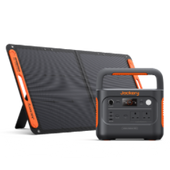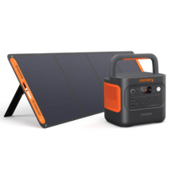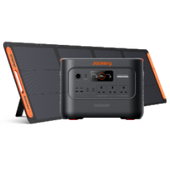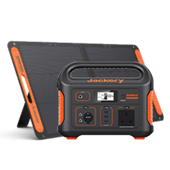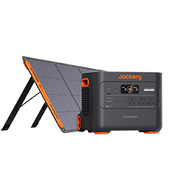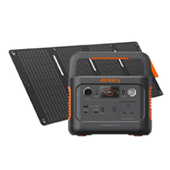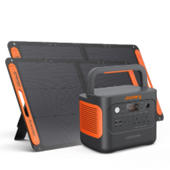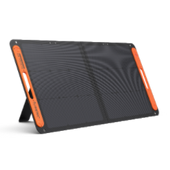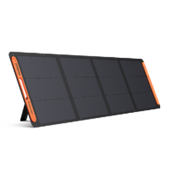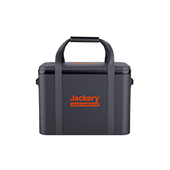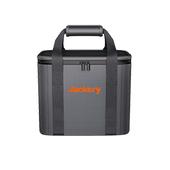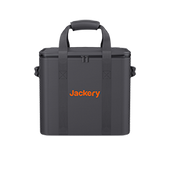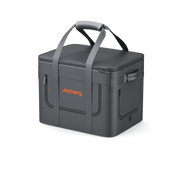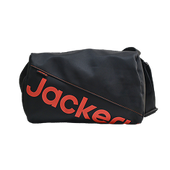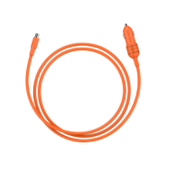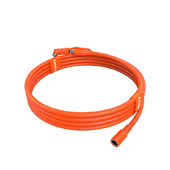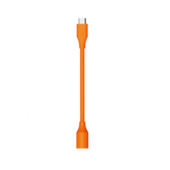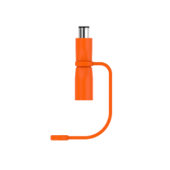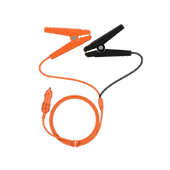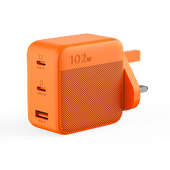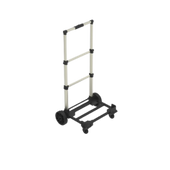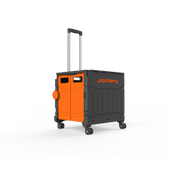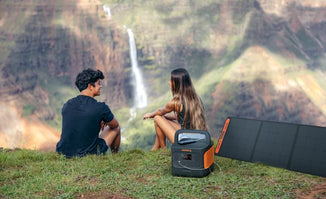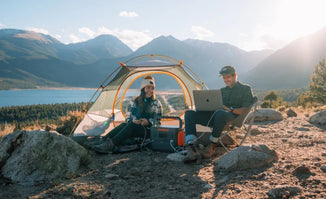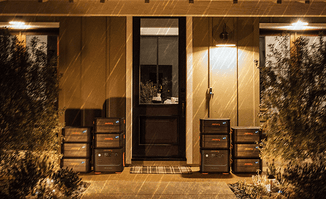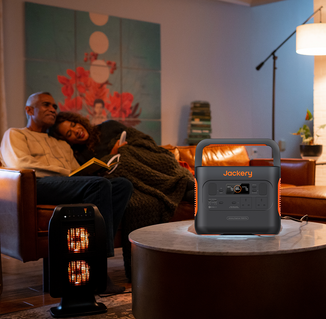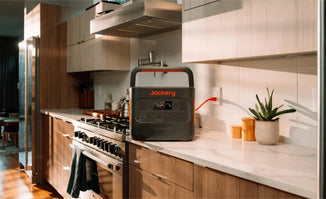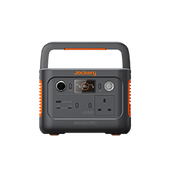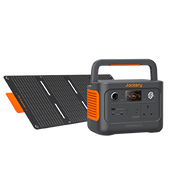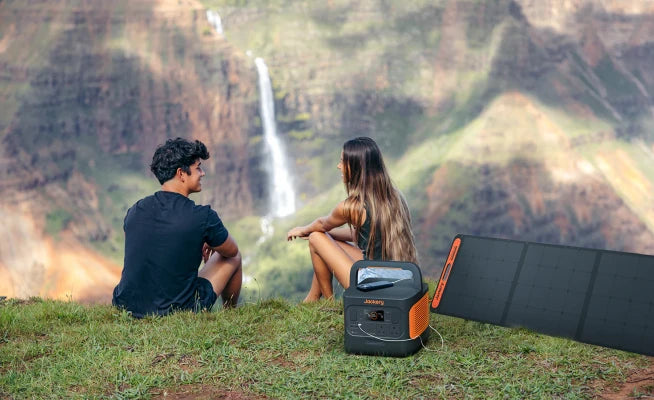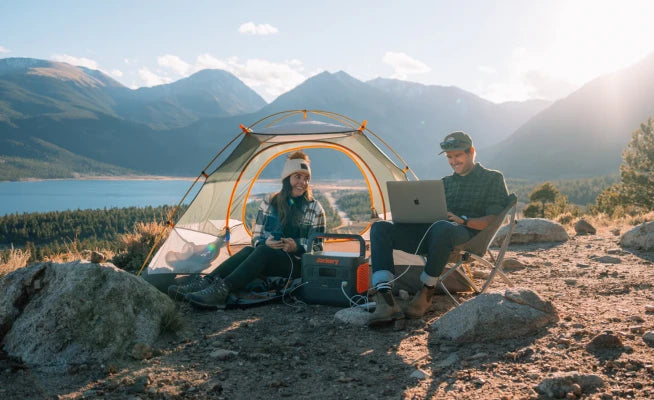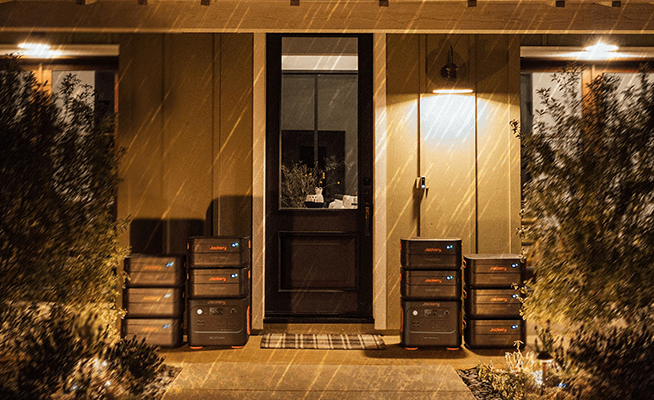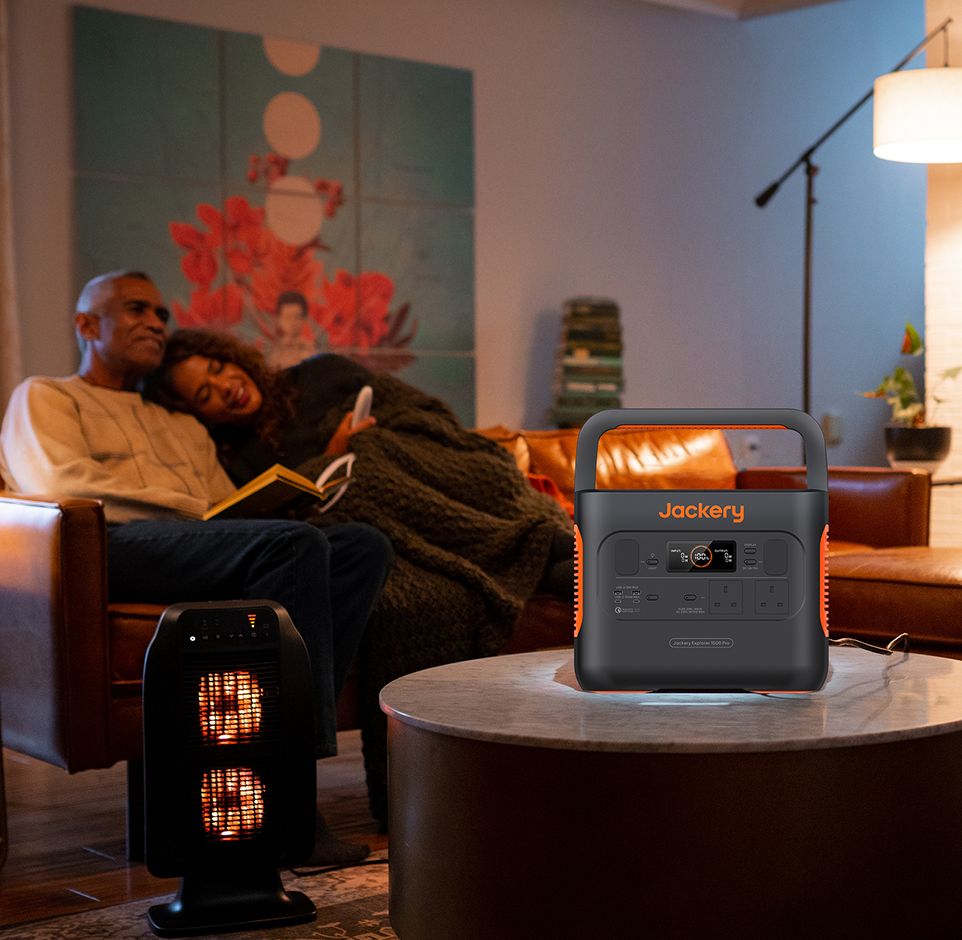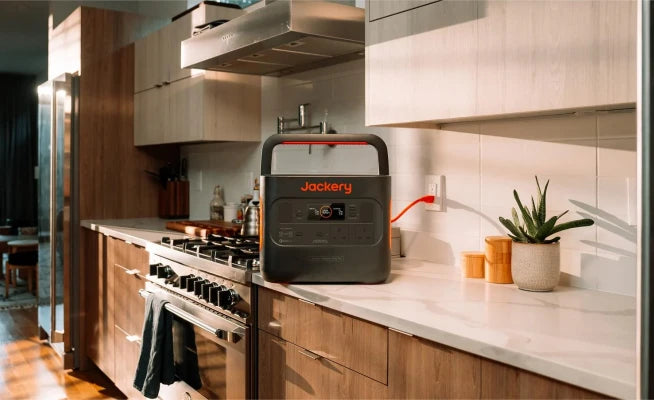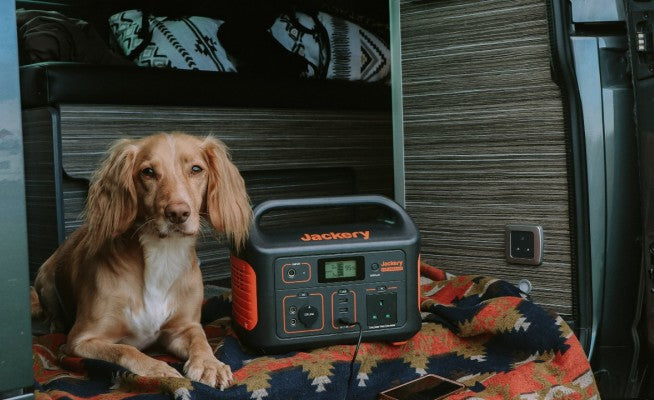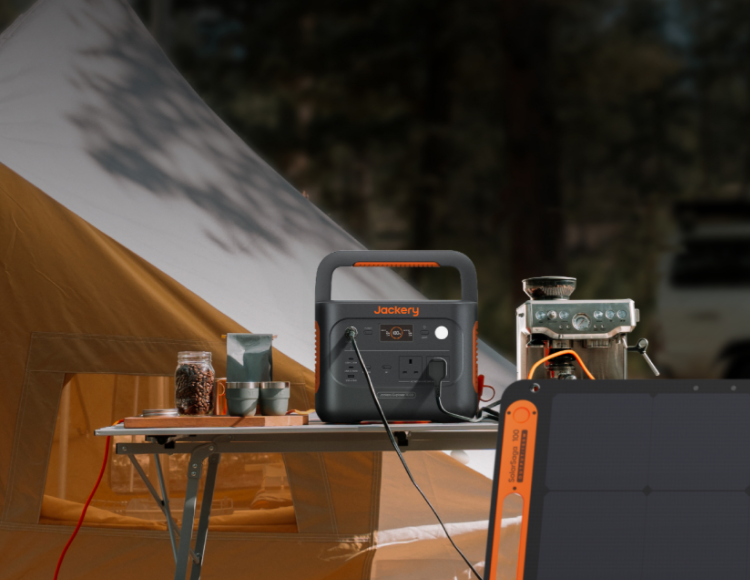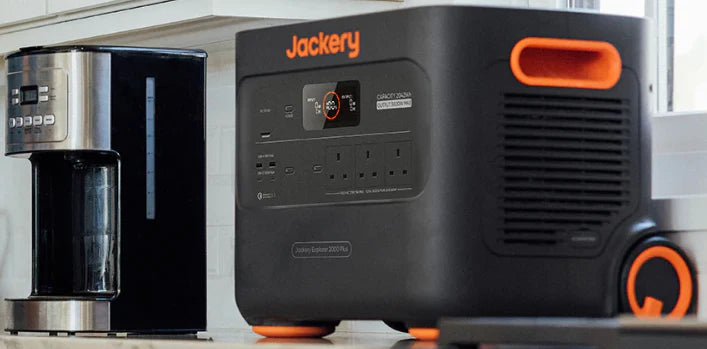Fishing from a boat gives anglers the distinct advantage of being able to reach waters that can't be reached from the shore. This opens up new opportunities to catch a broader range of fish species. You need to be prepared, have the correct gear, and know the laws before you go boat fishing in the UK, whether you're on inland canals, calm waterways, or out in the deep sea.
This in-depth guide covers everything from the right gear to seasonal species, to power options like the Jackery Explorer 500 and 300 Plus portable power stations, and correct boating etiquette. This resource is for both beginners and experienced fishermen. It will help you fish better, stay safe, and enjoy all the fun and freedom of being on the open sea.
|
Key Takeaways: |
|
● Boat fishing is the practice of angling or fishing from a boat or another sort of watercraft, as opposed to fishing from the shore or riverbank. ● Offshore boat fishing, often known as deep-sea or open water fishing, occurs in deep water (greater than 30 metres) and at a distance from land. ● It is necessary to obtain a rod license from the Environment Agency to fish from a boat in freshwater bodies of water in the United Kingdom. ● By modifying the length of the "drogue ropes" on either side, you can control your drift and the angle of the boat, allowing you to drift along a bank or other feature rather than out in open water. |
Overview of Fishing by Boat
Boat fishing is the practice of angling or fishing from a boat or another sort of watercraft, as opposed to fishing from the shore or riverbank. This method enables fishermen to access a broader range of fishing locations, including deeper seas and areas previously inaccessible from the shore, as well as utilise a variety of fishing techniques.
Recreational fishermen typically fish either from a boat, from a shoreline, or a riverbank. Fishing from a boat, or fishing vessel, can use a variety of techniques, including nets and fish traps, but angling is by far the most popular. Fishing from a boat provides greater access to different fishing grounds and species of fish than fishing from land.
Legal Regulations for Fishing by Boat in the UK
Given that there are well over 30,000 licensed vessels operating on our waterways, it should not come as a surprise that a significant number of individuals satisfy the requirements of both the boating customer and the angling customer.
Who Owns the Fishing Rights?
Fishing rights are legal property on their own. We possess the fishing rights on most canals, with a few exceptions that date back to the Canal Enabling Acts.
On river navigations, the position is that where we hold land, we also own the fishing rights that come with it. In other areas of our rivers, we are typically solely the navigation authority. In most cases, the riparian owner owns the fishing rights. In many situations, angling clubs and associations have purchased these fishing rights, as fishing rights can become distinct from land ownership. Clubs that have purchased fishing rights from landowners include the Birmingham Anglers Association, which controls many miles of fishing rights on the River Severn and River Avon, as well as various Nottinghamshire clubs on the River Trent.

Does My Boat License Allow Me to Fish on the Canals?
Your boating license does not provide you the right to fish from your craft or the towpath. We regulate fishing rights on canals and rivers through licensing agreements with angling clubs or our Waterway Wanderers scheme.
If you wish to fish from a moored boat or kayak, you must acquire permission. The controlling angling club offers day or season memberships, as well as a Waterway Wanderers yearly permit. Many, if not all, of our customer clubs provide day permit facilities on one or more of their let areas. In many situations, day licenses are obtained from the club's patrolling bailiff for roughly £5 or less.
Please keep in mind that you should not fish from a boat in designated 'no fishing' areas. In addition, if you're fishing from a boat in a canal, you must moor it. Fishing must not take place from a moving vessel.
Where Can I Fish with Just My Environment Agency Rod License?
Many people assume, or claim to believe, that having an Environment Agency (EA) rod license allows them to fish in a canal lawfully. Of course, a rod license is required to fish anywhere, including in your backyard pond!
With a few exceptions (some EA-owned fishing rights), a rod licence does not guarantee the owner the legal right to fish any area of freshwater. It just allows you the right to own a fishing rod or pole, just as a gun licence.
Why Should I Purchase a Rod License?
There are two responses to that. First and foremost, anyone fishing without a rod license is breaching the law. Second, all funds received are used to maintain, improve, and expand fisheries and angling in its broadest meaning. This includes everything from monitoring and regulating fish stocks to encouraging angling participation.
We collaborate closely with the Environment Agency and can advise on how the approximately £2 million earned from rod license sales could be best allocated to benefit angling and anglers.
How Can I Get a Permit When I'm on the Move?
If you've moored up in a new place and want to know what permission you'll need, use our fisheries list to find out which club manages a specific stretch of water. If you utilise our network frequently, consider purchasing one of our Waterway Wanderers passes as well.
The 'Fishing Info' area of the Angling Trust website is the first place to look for information on river navigation.
Why Not Have a Nationwide Fishing Permit for Boaters?
It's an excellent idea. It would be convenient and worry-free for boating customers. There may be more revenue that allows clubs and us to reinvest in our fisheries. However, there are enormous practical obstacles to overcome before this becomes a reality.
These include obtaining consent from a large number of different clubs and fishing rights owners for all of the fisheries that would be covered. Then it would be difficult to agree on an income split ratio, let alone a set of fishing rules that everyone would sign up to. Resolving all of these issues would be a significant undertaking.
Angling Businesses and Boat Licenses
Suppose you offer guided fishing trips and take paying passengers out on our waters. In that case, you'll need a Skippered Passenger Boat License. For additional information, see our business boating pages.
The skipper must hold a Boat Master's license or equivalent, as well as commercial insurance. The application process is straightforward; download and submit an Operating Proposal.
Types of Fishing by Boats
Boat fishing offers a wide range of experiences, from calm inshore excursions to exhilarating offshore adventures. Each technique requires specific skills and equipment. Here's an overview of the most prevalent boat-based fishing methods.

Offshore Fishing
Offshore boat fishing, often known as deep-sea or open water fishing, occurs in deep water (greater than 30 metres) and at a distance from land. It is more perilous than fishing in shallow water or on lakes. More understanding of weather patterns, navigation, and safety precautions is required, and this is not a beginner-friendly activity.
Offshore boats are often significantly larger than inshore boats and may require mooring in a marina. They are sturdy enough to withstand the weather and sea conditions seen in open oceans. Though they vary in style and purpose, and prices vary greatly, they are generally costly to construct and maintain. Instead of owning boats, most offshore recreational fishers charter them. It is frequently a leisure activity for the wealthy, and there is a demand for charter boats that are outfitted and serviced to the highest standards of luxury.
Offshore game species, such as marlin and tuna, can be huge and require hefty tackle. Fishing is often done using sea rods, such as downtide rods, 30- to 50-pound lines, and multiplier reels. Baits are identical to those used for inshore fishing, and include squid, whole mackerel, and artificial lures. Fishing for large cod, ling, and congers takes place over reefs and wrecks.
Inshore Fishing
Inshore boat fishing is defined as fishing from a boat near land and in water less than 30 metres deep. The boat can be a human-powered watercraft, such as a dinghy, rowboat, kayak, or canoe, or a light motorboat, including a runabout, inflatable, fanboat, or small cabin cruiser. Inshore boats are often small enough to be carried on a vehicle roof rack or towed on a boat trailer, and they are significantly less expensive than offshore fishing boats. Kayak fishing has recently gained popularity as a technique for inshore boat fishing.
Anglers throw from the boat with an uptide sea rod that is 9 to 10 feet long or a shorter downtide rod that is 6 to 8 feet long. Lines typically have a breaking strain of 18 pounds to 50 pounds, depending on the kind of fish being targeted. Reels are often multipliers; however, fixed spool reels are gaining popularity. Baits are comparable to those used for beach and rock fishing, although they are typically larger because larger fish are targeted. The species will include all coastal animals, as well as large conger eels and tiny sharks such as tope and smoothhound.
Kayak Fishing
Kayak fishing combines stealth and simplicity, providing access to tiny coves, river mouths, and rocky outcrops that larger boats cannot reach. Popular UK targets include mackerel, sea trout, and even little conger eels. Sit-on-top kayaks with rod holders and storage compartments are great. Always check the weather forecast and wear a buoyancy aid; abrupt waves can capsize unstable models.
Essential Gear and Clothing for Boat Fishing
Boat fishing is more than just casting a line overboard; having the proper equipment and clothes is critical for both success and safety. The recommendations below are entirely based on reliable UK sources for freshwater and saltwater boat angling.

Rods & Reels
Shorter rods—typically 6 to 7 feet—are ideal for boat fishing because they provide more control in limited space. Fixed spool reels are popular among beginners due to their ease of use, particularly when targeting smaller species or fishing in shallower, inshore areas. In contrast, multiplier reels are frequently employed for deeper bottom fishing.
Rig, Lines, and Tackle
A robust mainline with a shock leader is essential for sea fishing from a boat, especially when casting weighted rigs. The two-hook flapper and the running ledger are popular rig types suitable for bottom fishing in various circumstances. Hooks should be selected to match the target species, and it is typical to carry various rigs to accommodate the tide or fishing depth.
Baits & Lures
Buzzers, boobies, and blob flies are popular patterns for stillwater trout fishing from a drift boat. They are handy when drifting across open water. Natural baits typically used in saltwater include ragworm, lugworm, mackerel strip, and squid. Many fishermen pack a variety of bait alternatives to suit shifting circumstances and target species.
Clothing for Changing Conditions
The weather in the United Kingdom is unpredictable, so layering is crucial. Begin with a moisture-wicking base layer, then add a fleece or heated midlayer, and finish with a waterproof and windproof outer shell. Deck boots or Wellingtons are excellent for waterproofing and offering a secure grip. Polarised sunglasses reduce surface glare, while a warm cap and sunscreen protect from both cold and UV rays.
Safety Equipment
A life jacket or personal flotation device (PFD) is required on all boats. Safety does not end there; you should also have a waterproof phone bag, a first aid kit, and flares for emergency signalling. When fishing offshore or in deeper waters, a VHF radio is a good idea.
Extra Equipment
It's a good idea to carry a tackle box to arrange gear, a cooler to keep bait or fish fresh, and dry bags to store additional clothes and valuables. If space allows, a padded seat or box lid can make extended sessions more comfortable. An anchor is also required for maintaining position during a drift or tide change.
Jackery Power Station
Portable power stations make it easy to power essential gadgets, such as fish finders, phones, and bait aerators, for extended periods. The Jackery Explorer 500 and 300 Plus are compact, quiet, and easy-to-carry lithium power packs that are ideal for fishing on a boat. They provide devices with a steady charge, eliminating the noise and pollution associated with a generator. These devices have numerous output ports and can be charged by solar power, helping to keep your gear functioning smoothly on the road.
Jackery Portable Power Station for Fishing
UK waters can be busy, and fish can be easily spooked by noise. Jackery Portable Power Stations are virtually silent, meaning you won't disturb fish or other anglers with a noisy generator. With increasing awareness and regulations around environmental impact, an emission-free power source like a Jackery is a responsible choice for UK waterways. This aligns with a growing desire for sustainable outdoor activities.
Boats, especially smaller fishing vessels common in the UK, have limited space. Jackery Portable Power Stations are designed to be compact and lightweight, making them easy to stow in a locker or under a seat. Some models even feature foldable handles for ergonomic carrying.
You can easily bring the Jackery on and off the boat for charging at home, in a marina, or for other outdoor activities. This flexibility is a key advantage over fixed onboard battery systems if you don't need a massive, permanent power solution.
Jackery Explorer 500
The Jackery Explorer 500 can be an excellent choice for boat fishing, especially for day trips or shorter overnight excursions.

Compact Size: The Explorer 500 is roughly the size of a basketball and weighs about 14.1 lbs (6.4 kg), making it easy to carry and store on a boat where space is often limited. It has a sturdy handle for convenient transport from your car to the boat and around the deck.
518Wh (Watt-hour) Battery: This capacity is suitable for running various smaller electronics and some larger ones for a reasonable duration. With a 500W AC pure sine wave inverter and 1000W surge, it can safely power sensitive electronics, such as fish finders, GPS devices, electric fishing reels, and even water pumps.
Solar Panel Compatibility: You can pair it with a Jackery SolarSaga 100W solar panel to recharge it while out on the water, harnessing free and clean solar energy. This significantly extends your fishing time without requiring shore power or a noisy gas generator. You can charge it from your boat's 12V outlet while underway. Or charge it fully at home before your trip.
No Fumes or Noise: Unlike gas generators, the Explorer 500 operates silently and produces no emissions, which is crucial for maintaining a peaceful fishing environment and avoiding disturbance to fish. Using solar power makes it an environmentally friendly choice for enjoying the outdoors.
|
Jackery Explorer 500 Running Time |
|
|
GPS Device (30W) |
10.6H |
|
Phone (18W) |
30 Charges |
|
Portable Fridge (90W) |
4.2H |
|
Camera (8.4W) |
23.6H |
|
Water Pump (60W) |
6.1H |
(*The working hours are only for reference; the actual working hours depend on your usage.)
Jackery Explorer 300 Plus
The Jackery Explorer 300 Plus isn't just a portable power station; it's a strategic piece of gear for the boat angler who values efficiency, quiet operation, and reliable power for essential electronics without the bulk or hassle.

Small Skiff to Mid-Sized Cruiser: Forget hard-wiring complex battery systems for basic needs. The 300 Plus is light enough (under 9 lbs) and compact enough (the size of a small tackle box) to be tossed into a dry bag or a small locker on virtually any boat. No tools, no wiring. Pull it out, plug in your device, and you're good to go. This means more time fishing, less time fiddling with power.
Silent Operation: Unlike noisy gas generators that scare fish and disrupt the tranquillity of a peaceful morning on the water, the 300 Plus is virtually silent. You won't hear anything but the gentle hum of your trolling motor (if electric) or the splash of a rising fish. Perfect for stealthy approaches to fish-holding structures or when fishing in areas where noise pollution is a concern.
Powering Your Essentials: The 300 Plus can run a typical 10-15W fish finder for 19-28 hours straight. That's more than enough for multiple full days on the water. Keep your handheld GPS or dedicated boat GPS charged for accurate navigation and marking those secret spots. If you're using smaller electric reels, you can use the AC outlet to top off their dedicated batteries between uses.
LiFePO4 Chemistry: This is not simply jargon. It means the battery is more stable and resistant to thermal runaway than earlier lithium-ion batteries. On a boat, where situations can change rapidly, increased safety is critical.
Built-in Protections: Overcharge, short-circuit, and over-temperature protections are all integrated, providing you with peace of mind while operating gear in a potentially wet environment. Eliminates the risk of carbon monoxide poisoning or fuel spills, which are significant safety hazards on boats.
|
Jackery Explorer 300 Plus Running Time |
|
|
GPS Device (30W) |
5.9H |
|
Phone (29W) |
13 Charges |
|
Portable Fridge (90W) |
2.4H |
|
Camera (8.4W) |
13.1H |
|
Water Pump (60W) |
3.4H |
(*The working hours are only for reference; the actual working hours depend on your usage.)
How to Fish from a Boat?
To have a safe and pleasurable boat fishing experience, keep a few crucial points in mind. Here are some key tips for a secure and successful fishing expedition.

Tip 1: Master The Art Of Weather Literacy
Utilise applications such as Windy or FishTrack to track wind speed, wave height, and tidal surges. When gusts are greater than 15 knots or waves are greater than 1.5 meters, you should avoid going offshore.
Tip 2: Follow The Regulations Of The UK
It is necessary to obtain a rod licence from the Environment Agency to fish from a boat in freshwater bodies of water in the United Kingdom. Nevertheless, a licence is not typically necessary for fishing in saltwater, except in protected areas such as Marine Conservation Zones (it is essential to check the local rules regarding this matter).
Tip 3: Make Maintenance a Top Priority
Before embarking on any journey, thoroughly inspect the batteries, bilge pumps, and engines to ensure they are in good working condition. During travel, corrosion induced by saltwater may render systems inoperable.
Tip 4: Optimise Consumption of Energy
It is essential to maximise energy use to have a fishing experience that is both sustainable and effective. A solar-powered generator can significantly reduce reliance on boat batteries, offering a dependable and environmentally friendly option. To keep your catch fresh without depleting the battery life of your boat, these generators can provide electricity to essential gadgets, such as refrigerators, for extended periods.
Tip 5: Keep Wildlife In Mind
When dealing with endangered species such as the undulate ray, employ the "catch and release" method of conservation. Instead of barbs, use hooks that do not have barbs.
Methods for Fishing by Boat
Anchoring and drifting (with or without a drogue) are the two primary methods of fishing that are available to anglers who are fishing from boats. Before selecting whether it is appropriate to anchor or drift, you should take into consideration the wind speed as well as the approach that you have chosen.

Method 1: Anchoring
During the early and late seasons, it is best to fish from an anchored boat. The fish normally shoal densely and are within 70m of the bank in water that is 10-16ft deep. The ideal scenario would be to situate the boat 60 metres off the shore and cast parallel to the bank. This is typically located along a weed bed or drop-off, rather than in open, featureless water.
Anchoring is easier than drifting and is excellent for beginners in boat fishing. Anchoring means fishing from a floating platform, allowing you to fish water that is inaccessible from the bank. An anchor typically consists of three parts: the anchor, the anchor chain, and the rope.
Under Calm Conditions
To secure the rope to the row lock or "G" clamp, lower the anchor over the side of the boat in calm conditions (0–6 mph winds). The anchor will lie on the bottom, with the anchor chain and rope positioned directly above it. This is all that is required to hold you in position.
A "G clamp" is required for all boat anglers. It allows you to build a movable anchor rope fastening point. This means that by slightly adjusting the "G" clamp, the anchor rope is securely in place. You are effectively establishing a new anchor point. The boat will now keep in place at a different angle, allowing you to cast more effectively at the feature or along the bank, putting your flies where the fish are.
Remember to lower the anchor gently and quietly. Do not simply toss the anchor in or allow the anchor chair to rub against the boat gunwales, since this may cause significant disturbance. It's pointless to scare any fish away because you'll be trapped in position.
In Strong Winds
In heavier winds, merely dropping the anchor to the lakebed will not cause it to "hold bottom" and keep your place. You will drift as the anchor travels across the bottom, unsettling the fish. To hold you securely, the anchor must "dig in" and hold.
In heavy winds, your first option should be to employ the water features. Anchor and fish at the "top of the wind", where the sea is calmer and the wind is weaker. Alternatively, look for protection in a sheltered harbour. However, your only alternative is to fish in rough water. In that case, you should anchor with a lengthy rope in most cases.
Method 2: Drifting
A drifting boat (one that floats broadside) allows you to cover more water and find fish rather than waiting for them to come to you. It's an essential approach for larger reservoirs and stillwaters. Practising drifting will significantly boost your catch rate. It will always be my preferred option between May and November, when the fish are more widely dispersed throughout the area.
However, despite the apparent benefits, drifting makes it much more challenging to regulate your line and fly. Make sure the fly line, leader, and flies are all in a straight line. You cannot have large bows in your fly line since you will not be in direct contact with your flies. If you are not in contact with your flies, you will not be able to see or feel any takes. To make "direct contact" with the drifting boat, retrieve at the same speed. This allows you to fish either statically or on the descent.
You must retrieve faster than the boat's speed if you want your flies to be moved or pulled while remaining in direct contact with the water. Therefore, the quicker the boat drifts, the harder it is to keep your fly under control and the more work you have to do. Fishing on the drift all day with gusts of 12mph or more may be exhausting, even with a drogue to slow you down.
Method 3: Using A Drogue
To limit the speed of the boat's drift, many anglers employ a "Drogue". Essentially, a "Drogue" is an underwater parachute. It slows a drifting boat down (rather than "anchoring" it to the bottom), allowing anglers to manage their flies better. It will also allow you to spend more time fishing in areas where you know there are fish.
In very weak breezes or calm conditions (0-6mph), a Drogue is unnecessary because the boat will naturally drift slowly. But with gusts of 7mph or above, it's a critical part of your tackle. This is too important to overstate. By modifying the length of the "drogue ropes" on either side, you can control your drift and the angle of the boat, allowing you to drift along a bank or other feature rather than out in open water. It is crucial to notice that in a swirling wind (along a dam or by a steep slope), the boat frequently becomes caught in a crosswind. This is nearly impossible to handle, no matter how good your boat is; you require a consistent wind direction.
Boating Etiquette
Begin with slow speeds. Please take the time to get to know the boat and understand how it handles and turns. The boat has multiple speeds, so you don't have to drive everywhere at full throttle. Remember to slow down as you approach your intended location. You cannot catch scared fish, and 20 feet of fibreglass with a 10 horsepower motor is hardly discreet. This is especially true in shallower water.
When driving to your destination, consider the wind speed. If the wind is blowing more than 11 mph and you motor across it, you will become very wet. Motoring "across the wind" in gusts of 15mph or higher is especially risky since a wave may overwhelm the boat.
When facing the wind, it's essential to maintain a reasonable pace (typically ¾). Get to the peak of the wind (the calmer water) and use the bank as protection before heading downwind to your target. It will take a lot longer, but you'll be safe and dry.
Respect Other Anglers
Regarding other fishermen, never motor up another boat's drift. This will have an impact on their fishing, resulting in conflicts and a severe scolding. If you need to cut across a boat, always aim to get behind it by at least 40 metres. If this is not practicable and you must motor in front of the boat, keep a distance of at least 100m.
It's also worth noting that you should never motor through the water you plan to fish. You should be especially mindful of this if you are repeating a drift. Return to your starting place in a wide arch, reducing your speed significantly. Half or ¼ speed is generally plenty. You should always give way to other watercraft (such as sailboats and canoes). Allow them to go first, and keep a safe distance from them. 30-40m is acceptable.
Bank anglers should have a minimum of 50m. However, many are very protective and practically territorial. This is especially true if the boat angler catches fish and the bank angler does not. On the majority of vast bodies of water, space is never an issue because the fish are well spaced out and there is a lot of water. You should err on the side of caution and give bank anglers 70m.
FAQs
The following are the frequently asked questions about fishing by boat:
1. Do I need a licence for a fishing boat?
Yes, most states demand a licence, whether for a single day, a limited season, or commercial fishing. Even if you catch the fish and return them to the sea, you need a licence. It makes no difference whether one intends to retain the fish or not.
2. Is fishing around a dock legal?
However, if they are fishing under your dock or near your boat, it is entirely lawful as long as they are not attached to or on the pier. Nobody owns the water. It's an issue of fishing etiquette, not a legal matter.
3. What size boat can I drive without a licence?
A licence is required for all types and sizes of boats, whether motorised or not. Riverboats, canal boats, and houseboats are all examples of motorised vessels. All portable, unpowered vessels (those without motors), including canoes, kayaks, dinghies, rowing boats, paddleboards, and even light inflatable craft, require authorisation.
4. What happens if caught without a fishing licence?
If you are apprehended by a police officer or an Environment Agency Fisheries Bailiff and a magistrate finds you guilty, you will be fined up to £2,500 under Section 27(1)(a) of the Salmon & Freshwater Fisheries Act, 1975.
Final Thoughts
Fishing by boat provides an unrivalled adventure, combining the thrill of angling with the flexibility to explore huge rivers. Whether you're negotiating Cornwall's craggy beaches, drifting through Scotland's lochs, or pursuing tuna in the Celtic Sea, fishing by boat provides opportunities that shore fishing cannot compare to. For beginners, this guide serves as your compass, covering boat types, essential gear, tactics, and safety considerations tailored to the UK's fishing scene.



